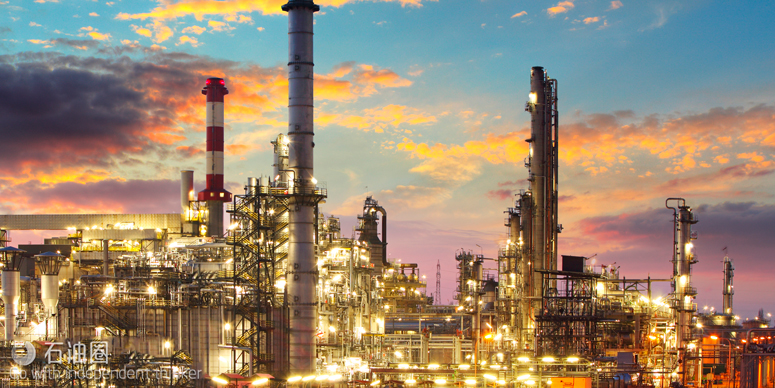TMissing out on Australia’s natural gas export boom may be the best thing that happened to Arrow Energy Ltd.
The decision by the Royal Dutch Shell Plc and PetroChina Co. JV to scrap a A$20-billion project to ship Arrow’s fuel overseas as liquefied natural gas looks like a blessing in disguise. The Brisbane-based producer now plans to boost output, allowing it to take advantage of Australian prices pressured higher by tighter supply at home. Meanwhile, rivals that opted to export are grappling with cost overruns, low international prices and mounting criticism as the country faces a looming gas shortage.
“They’re probably thanking their lucky stars they didn’t go ahead with Arrow LNG,” said Graeme Bethune, CEO of EnergyQuest, an Adelaide-based research company.
Australia’s race to become the world’s biggest seller of LNG — gas supercooled into liquid and shipped overseas on tankers — has put it on course for a supply crunch at home amid lower-than-expected domestic production and drilling bans in several states. Solving the budding crisis has become a top priority for Prime Minister Malcolm Turnbull, whose government last month said it would restrict exports from the eastern state of Queensland unless producers ensure adequate supplies for the domestic market.
Arrow, owner of the largest uncontracted gas reserves in eastern Australia and supplier of about 20% of Queensland’s gas, has begun engineering and design work on an expansion of its Tipton project in the state’s Surat basin that will more than double output, the company announced last week. The gas, which is extracted from coal beds, will be for both domestic consumption and available for use in export projects, it said.
“We now have a vision to become a very cost-competitive upstream coal-seam gas business in Queensland,” Ivan Tan, Arrow’s chief operating officer, said in an interview. While Tan didn’t comment on whether the company was better off having not built an LNG project, which was scrapped in 2015, he said Arrow has benefited from the lessons learned by the three other Queensland exporters and is focused on cost efficiency.
‘Best light’
Arrow’s Tan declined to comment on whether it had discussed its expansion plans with the government, but said the company was committed to the domestic market. Shell directed inquiries to Arrow. PetroChina didn’t respond to requests for comment.
“We need to put Arrow in the best light with the government,” Tan said. Arrow expects to release plans later this year about how it will bring to market the bulk of its reserves in the state’s southwest, he said.
The decision to build three separate east coast export projects, including Shell’s Queensland Curtis LNG, rather than collaborate resulted in $10 billion of unnecessary spending, according to consultant RISC Operations Pty. The next two Australian developments — Chevron Corp.’s Wheatstone LNG and Inpex Corp.’s Ichthys LNG — may overrun their combined $63 billion budgets by more than $8 billion. Woodside Petroleum Ltd.
Some Australian projects “lost sight” of the need to be vigilant with their decisions around capital spending, Woodside Petroleum Ltd. CEO Peter Coleman said in a speech Monday at an Australia oil and gas conference in Perth.
“The capital-intensive nature of those LNG plants has put pressure on those companies that have built them,” said David Lennox, a resources analyst at Fat Prophets in Sydney.
While Arrow holds “one of the best undeveloped gas sources for the east coast,” only part of it may be immediately viable for development, said Saul Kavonic, an analyst at Wood Mackenzie Ltd. “A lot of the Arrow resource is still relatively costly and needs infrastructure,” he said, adding that he expects some of it to go to the Queensland Curtis plant, which was seen as the outlet for Arrow’s gas after Shell’s 2015 takeover of BG Group Plc.
Arrow could cash in on buoyant domestic prices by keeping supplies at home. Spot LNG in Asia has fallen by about two-thirds since early 2014, according to World Gas Intelligence. Meanwhile, Australian wholesale prices have tripled in the last two years, a February report from the Australian Industry Group found.
“The gap between domestic and LNG prices has narrowed,” said Fat Prophet’s Lennox. “Arrow has done themselves no harm by staying out of the export market when they did.”
China is setting it sights on U.S. energy as a growing reliance on imports forces it to look beyond traditional suppliers, according to the head of the country’s biggest oil and gas company.
China National Petroleum Corp. will import more crude oil and natural gas from the U.S. and will consider participating in America’s growing liquefied natural gas export industry, Chairman Wang Yilin said in an interview Sunday with Bloomberg TV on the sidelines of the Belt and Road Forum in Beijing. The energy giant will sign $20 billion in deals during the two-day event, a meeting of countries involved in China’s initiative to connect Europe, Asia and Africa through infrastructure and investment.
“The U.S. has very rich oil and gas resources, and as China pursues a diversification of its crude supply the U.S. will of course be one of the sources.” Wang said. “We will consider exploring cooperation in areas such as jointly developing liquefied natural gas facilities and gas transport.”
China’s growing use of U.S. energy is taking CNPC beyond the Belt and Road plan, which is President Xi Jinping’s cornerstone trade initiative. Wang’s comments follow a separate deal between China and the U.S. announced Thursday by President Donald Trump’s administration that welcomed the country engaging in long-term contracts with American LNG suppliers.
CNPC currently has more than 50 joint projects under way in 19 countries taking part in Belt and Road, according to Wang. In Central Asia and Russia, they’re mainly focused on natural gas, while in African and Middle Eastern nations the majority of projects concern oil.
Falling production
The world’s biggest energy user is becoming more reliant on overseas crude supplies as production at home plummets after its state-run firms — including CNPC’s listed unit PetroChina Co. — cut spending to cope with the price crash. China has overtaken the U.S. as the world’s biggest oil importer, and emerged in February as the the largest buyer of crude from the U.S., which has boosted exports thanks to the country’s shale oil boom.
Though China’s oil giants are raising combined spending for the first time in four years, that may not be enough to halt the drop in domestic crude output, especially as focus shifts toward natural gas, according to the International Energy Agency. Production in the first quarter dropped 6.8% from the same period a year ago, extending the record pace of declines in 2016. Imports are up more than 12% during the first four months.
“We need to speed up our cooperation with resource countries to develop assets to meet China’s growing need for oil and gas,” Wang said. “By doing this, we can balance the higher reliance on imports with better use of foreign assets.”
Aramco, Gazprom
The $20 billion in deals to be signed during the Belt and Road Forum include Saudi Arabian Oil Co. taking a stake in the company’s Yunnan refinery, a $4 billion agreement for a natural gas processing plant in Azerbaijan with the State Oil Co. of Azerbaijan, gas storage and gas-fired power projects with Russia’s Gazprom PJSC and a geothermal project in Kenya, according to CNPC.
The agreement with the U.S. announced last week could pave the way for a second wave of investment in U.S. LNG terminals, according to Wood Mackenzie Ltd. American supplies accounted for almost 7% of China’s LNG imports in March, customs da da show. The nine cargoes sent over the last year to China from Cheniere Energy Inc., the first U.S. exporter from the country’s lower 48 states, were sold on a so-called spot basis, rather than under long-term contracts, the consulting company said.


 石油圈
石油圈
